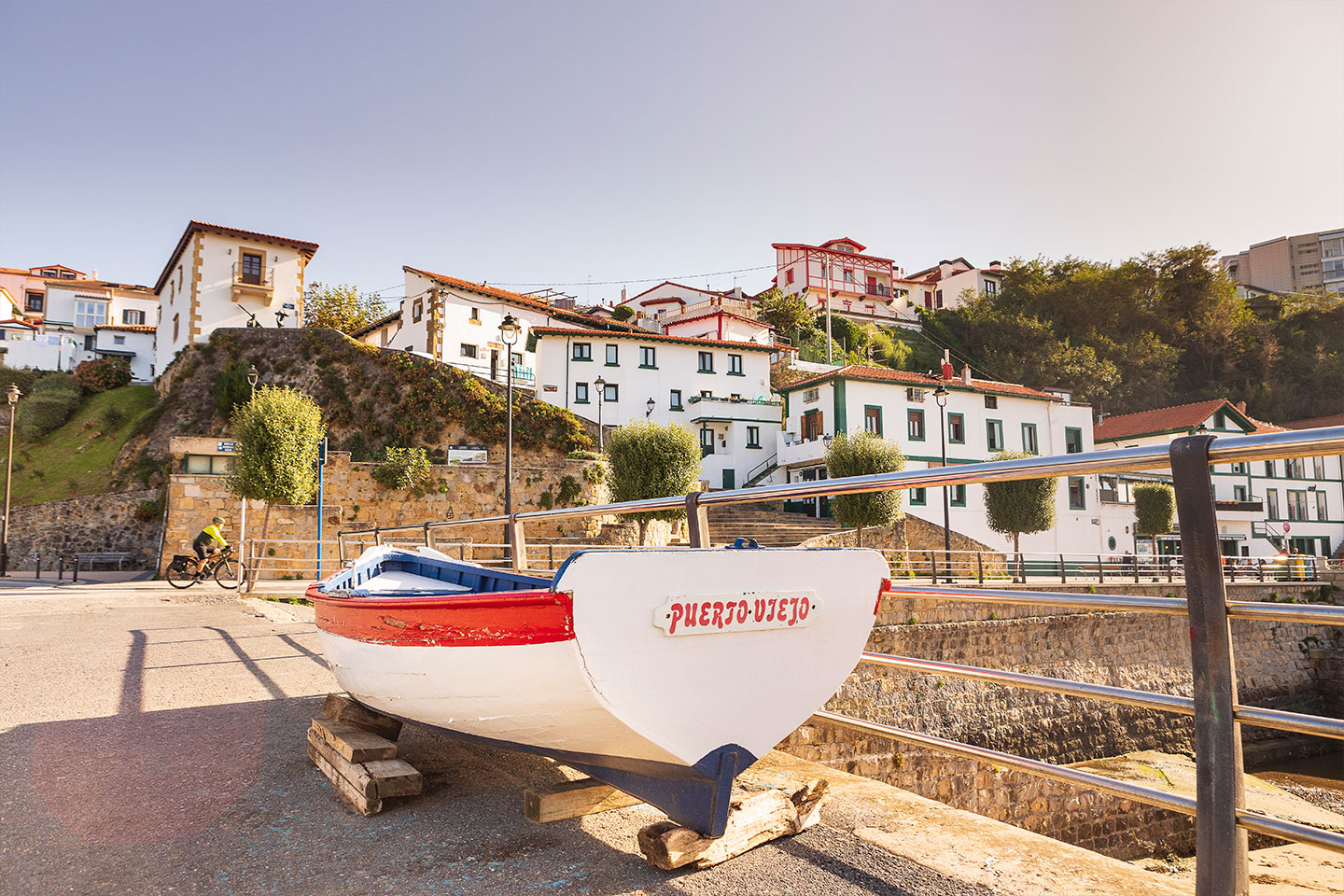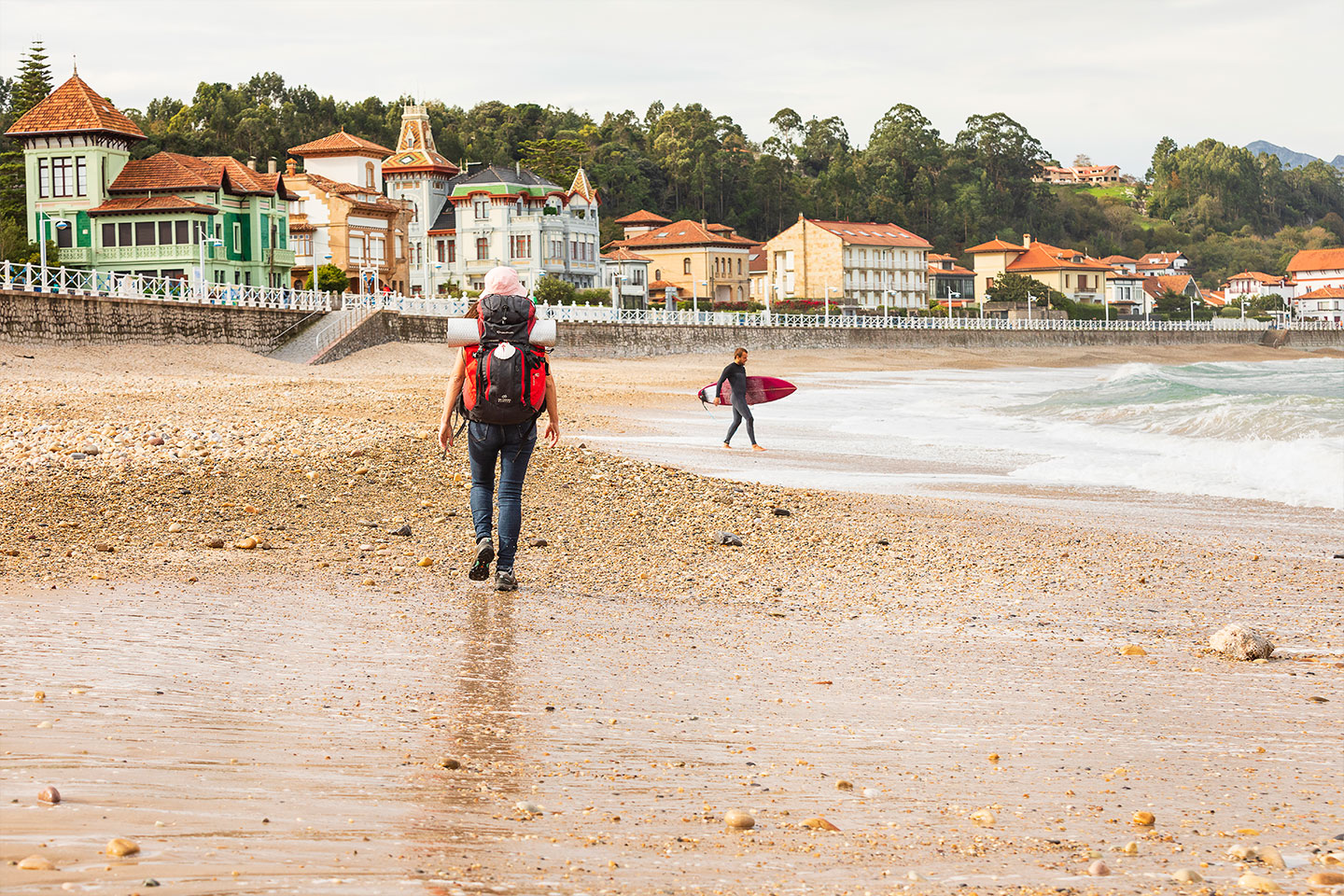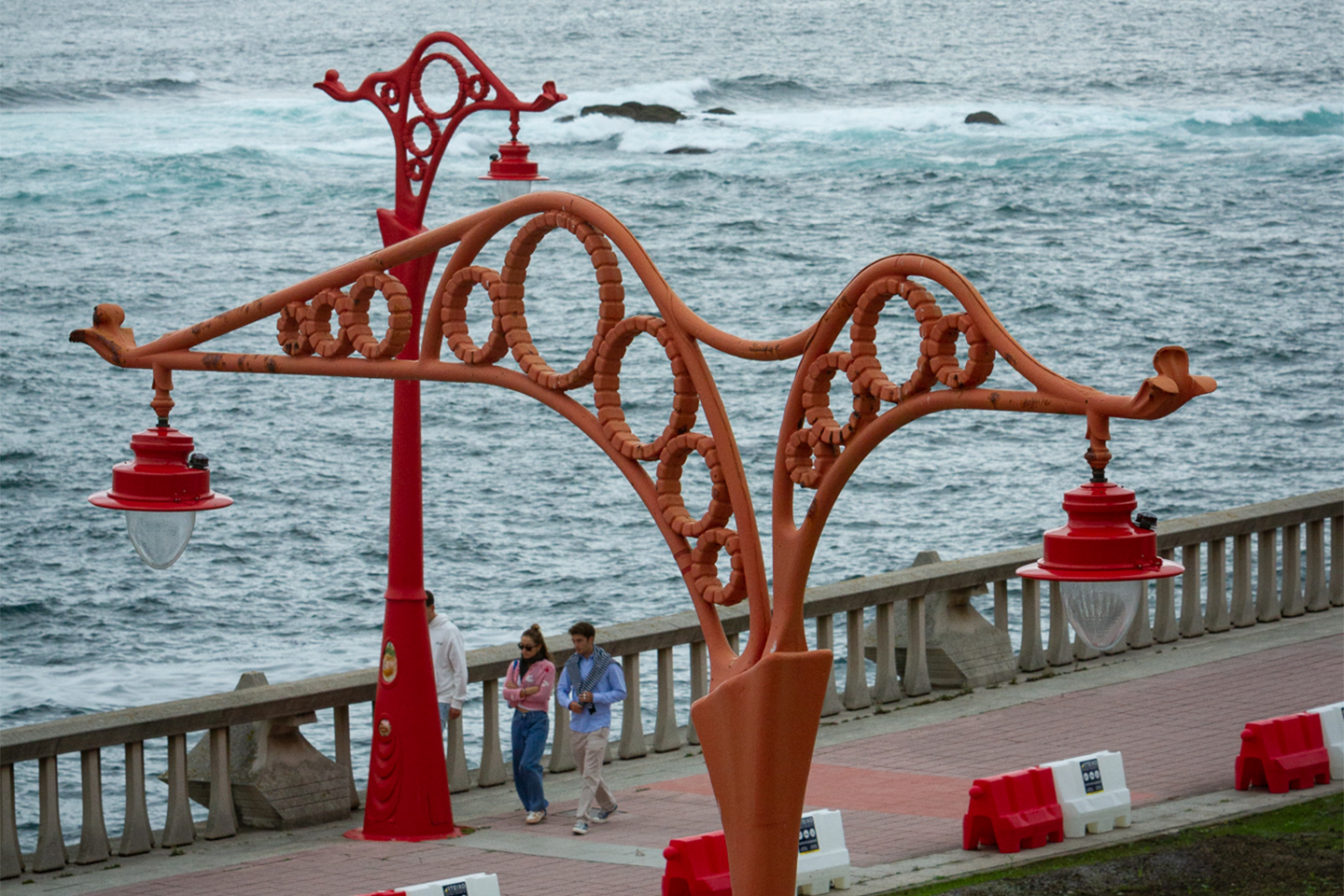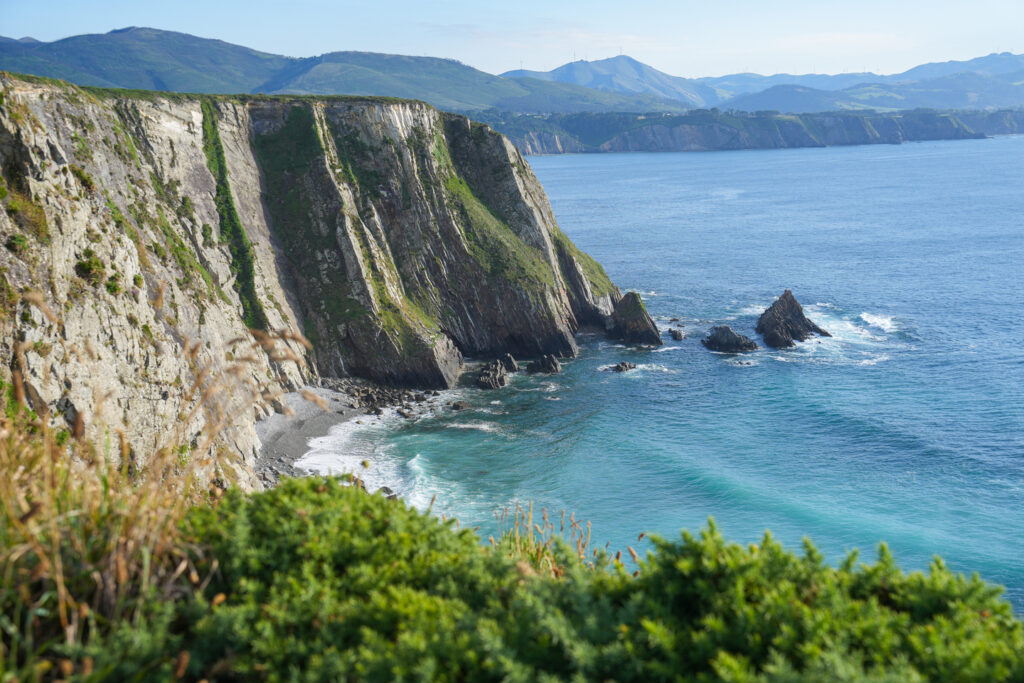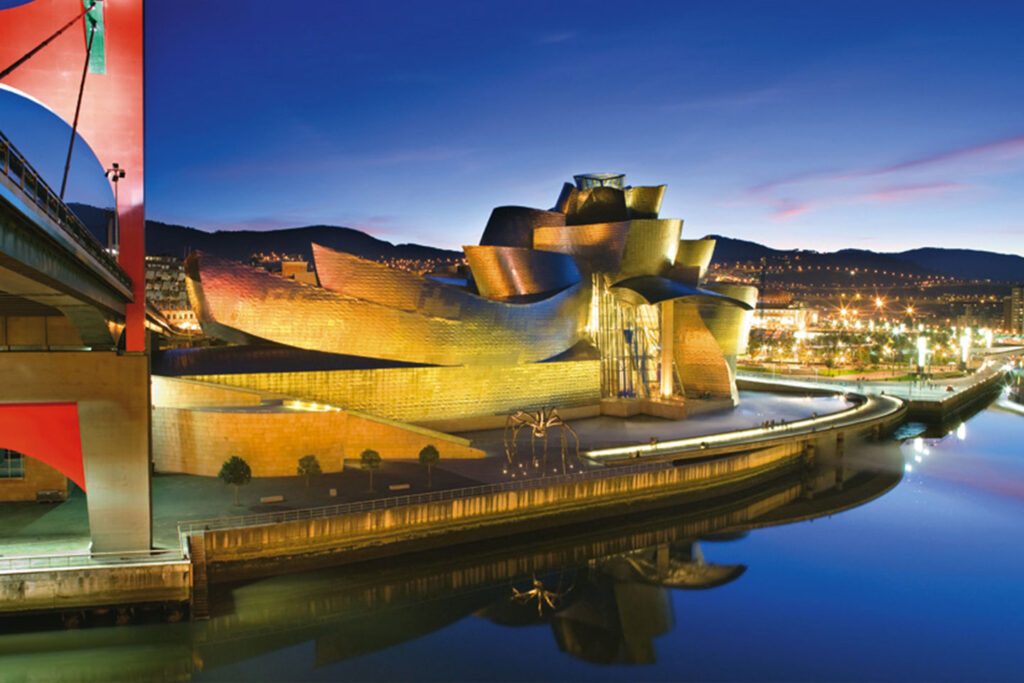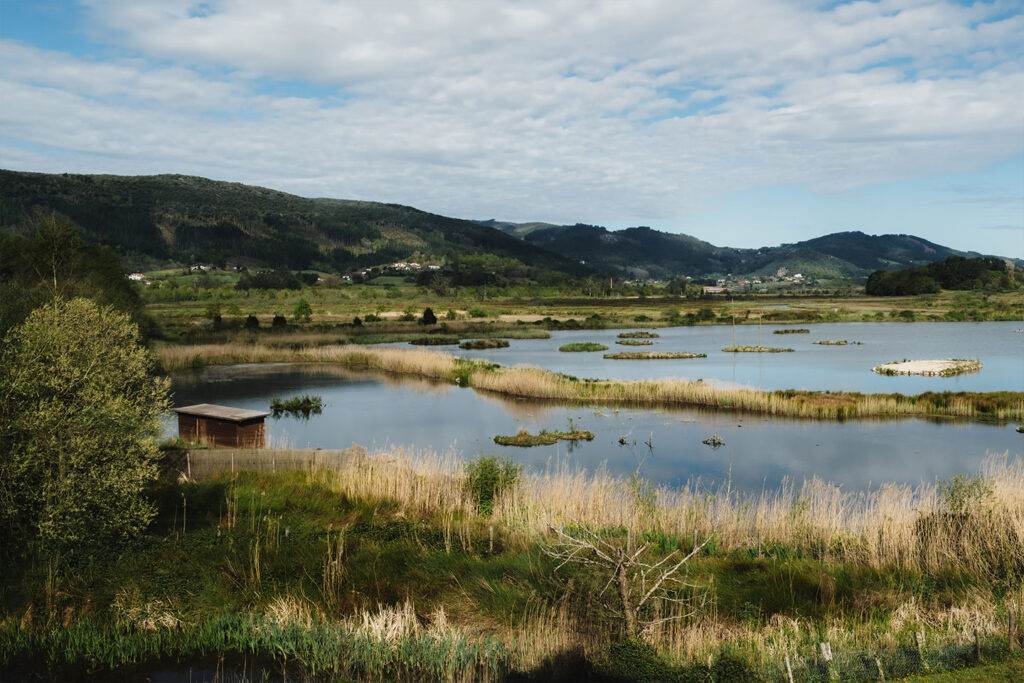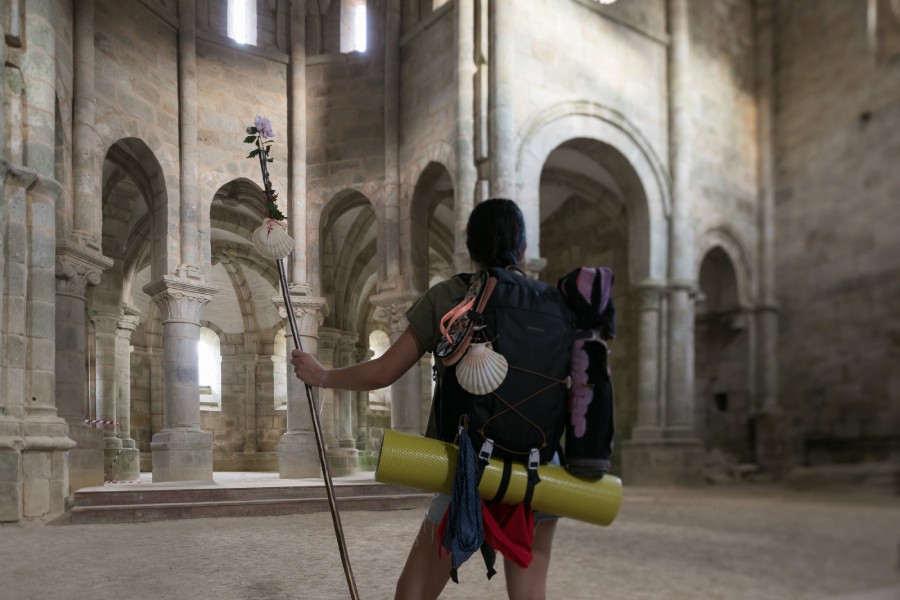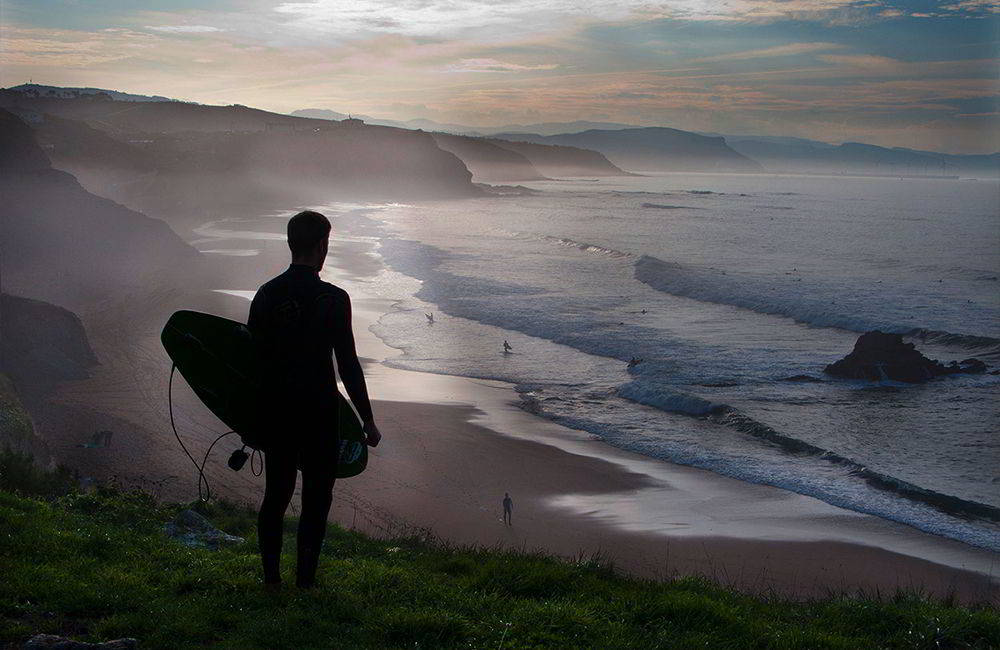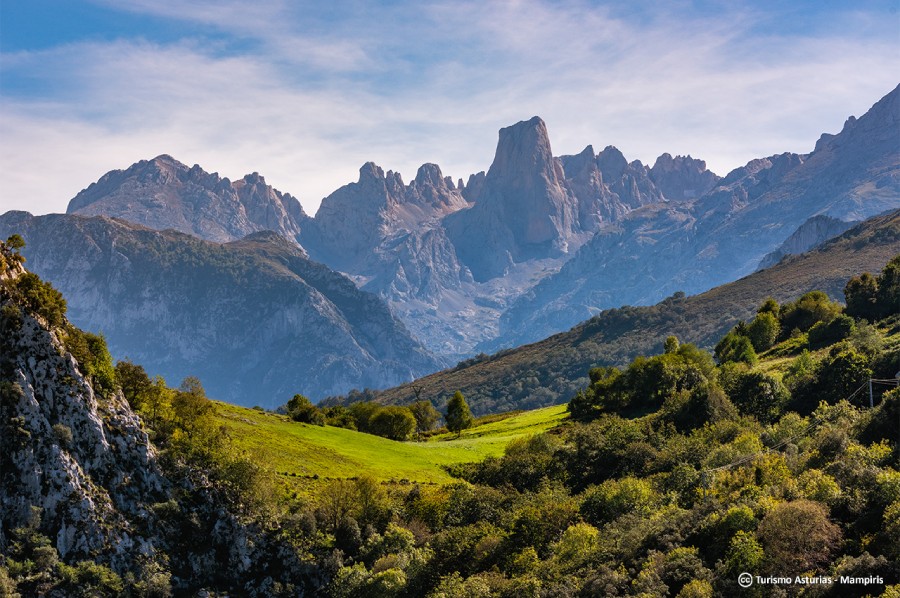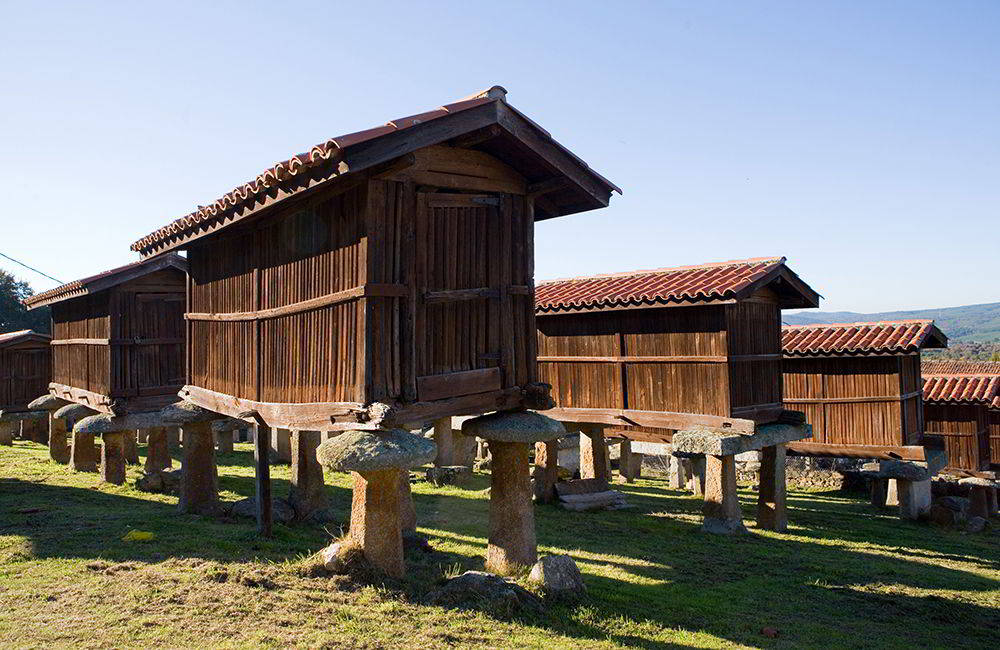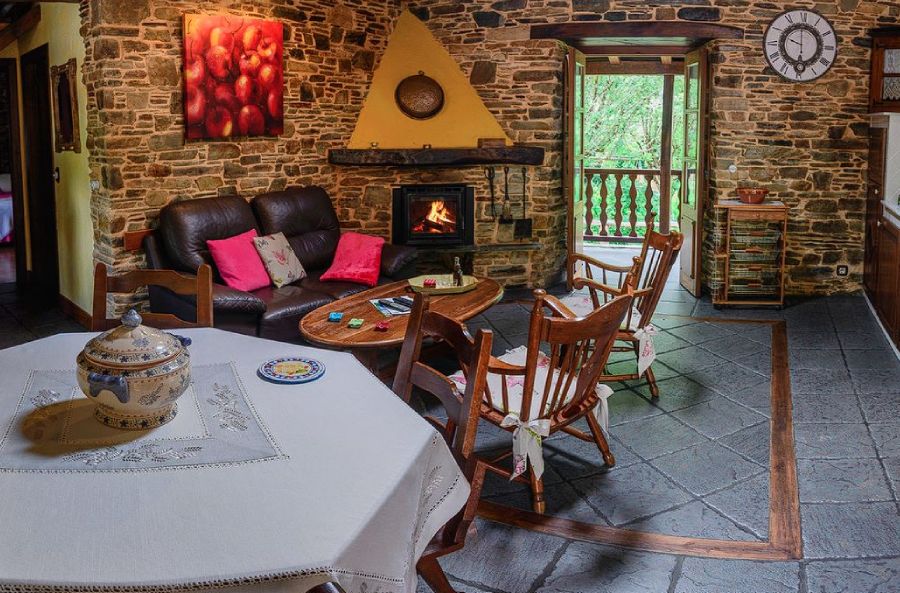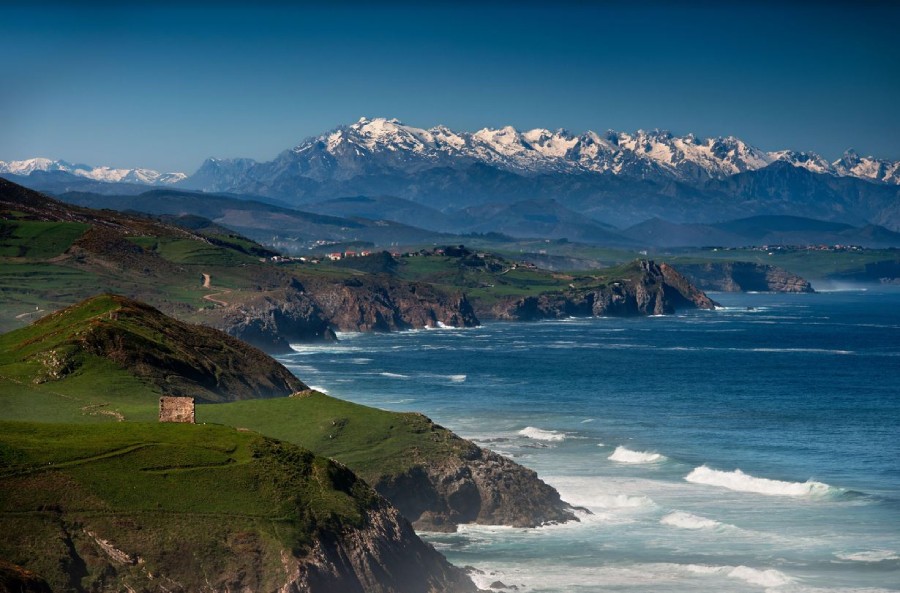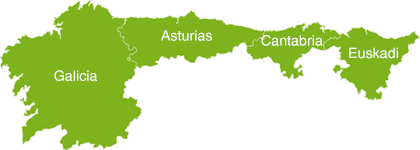What is it about seaside promenades that fascinates us so much? Could it be that the sound of the sea reminds us of the value of simpler things? It’s rare to find a town in northern Spain without ideal promenades for those who like to walk along the coast calmly and attentively. It happens in Getxo, among stately mansions and family beaches; in Suances, transporting us through estuaries and cliffs; in Ribadesella, offering us Indian-style architecture and the odd dinosaur footprint; and in A Coruña, with a promenade so long and rich it could take up a whole day. Here are four suggestions to discover the northern coastline from a more serene and close-up perspective.
Getxo (Bizkaia, Euskadi)
How long is the promenade of Getxo?
The promenade of Getxo stretches for approximately four kilometers, from the Bizkaia Bridge in Las Arenas/Areeta to the Old Port of Algorta, skirting the coast and offering spectacular views over the Bilbao Estuary, the Bay of Abra or the gleaming summer villas of Neguri. For those who wish to extend the walk, it is possible to do so by going up to Algorta, passing by Arrigunaga Beach and, from the Aixerrota windmill, following the path along the cliffs of Punta Galea. In total, another five kilometers of walking can be added.
What are the main attractions of the Getxo promenade?
– Bizkaia Bridge: also known as the Hanging Bridge, connects Getxo with Portugalete and is a UNESCO World Heritage Site. It is the oldest transporter bridge in the world still in operation, transporting people and vehicles in its suspended gondola.
– Old Port of Algorta: a charming fishing quarter of cobbled (and steep) streets, white houses with colorful windows and a maritime atmosphere. It is one of the favorite places for locals from Getxo to go for pintxos.
– Architectural icons: The promenade is full of stimuli but there are three buildings, almost next to each other, that always leave an impression on everyone who comes across them: the Shipwrecked Sailors’ House, the unique Punta Begoña galleries and the sumptuous villas of Neguri.
– Ereaga Beach. A wide urban beach with all services, excellent views and very comfortable for families.
– Arrigunaga Beach. Located in a more natural and less urbanized environment, sheltered by cliffs. It has a pioneering skatepark in Spain with more than 40 years of history.
Suances (Cantabria)
How long is the promenade of Suances?
The promenade of Suances extends approximately 2.5 kilometers, from La Ribera Beach to Punta del Dichoso. This route borders the mouth of the San Martín de la Arena estuary and La Concha Beach, offering views of the Cantabrian Sea and the rocky formations of the coast. Those walkers who want more can take advantage of the red-marked pedestrian shoulder that leads to Tagle and passes near the western cliffs. From the Tablilla viewpoint, there are very good views of these rock walls.
What are the main attractions of the Suances promenade?
– La Concha Beach. The main urban beach of Suances, with approximately 800 meters in length, is a wide, comfortable beach with all services.
– Punta del Dichoso. Rocky promontory at the end of the promenade, a great viewpoint with panoramic views of the entire coast and a curious fact for music lovers: it was here that the photo for the cover of ‘El Mar que no Cesa’, the first album of Héroes del Silencio, one of the most popular Spanish-language rock bands in history, was taken.
– Los Locos Beach. Located to the north of Punta del Dichoso and very exposed to the fury of the Cantabrian Sea, it is known for its surfing conditions.
– The lighthouse and defensive walls of El Torco. In the past, the lighthouse guided ships and the walls protected the port entrance. Today, the old defenses house the Summer Courses of the University of Cantabria and an art gallery.
Ribadesella (Asturias)
How long is the promenade of Ribadesella?
From the town bridge to the Punta del Pozo viewpoint along the Santa Marina promenade there are just over two kilometers of pleasant walking along a typically Cantabrian corridor: a wide and comfortable walkway next to an emblematic railing and accompanied by some of the most beautiful summer villas on the northern coast. Those who want to keep walking (and adding kilometers) can do so along the other side of the estuary: along the equally popular Grúa promenade and then up to the La Guía chapel on Mount Corbero. From Corbero you get the best views of the promenade, the villas and the well-known topography of Ribadesella.
What are the main attractions of the Ribadesella promenade?
– The villas (Villa Rosario, or the chalet of the Marquesa de Argüelles and the Piñán mansion) that remind us that, over a hundred years ago, someone chose this corner of Asturias to enjoy the cool northern summers.
– The Marina beach. Let’s not forget that the very reason for the promenade is… its beach. It has pale, fine sand, all the services, is ideal for learning to surf, and since 1989, it hosts its popular horse races during Holy Week. You couldn’t ask for more.
– Punta del Pozo viewpoint. When the tide is low, it’s possible to follow the path over the rocks in search of dinosaur footprints, fossilized on the seabed and in the rocky walls.
– La Guía Chapel. Next to this charming little church is a plaque commemorating the passion a Belgian woman felt for Ribadesella who, along with her husband Marcel Gevers, fled their country during World War II: “In love with this beautiful place, I always wished that anyone visiting Asturias would admire this wonderful landscape.”
– The Mingote murals along the Grúa promenade. They narrate the history of Ribadesella in six stages, with the talent, graphics, and humor of the artist who passed away in 2012.
A Coruña Promenade (A Coruña, Galicia)
How long is the promenade of A Coruña?
Quite a few kilometers: more than 15, to be exact. It’s not a traditional promenade but rather the combination of several sections, some purely urban, others rustic, that allows you to spend over three hours (one way) walking along the sea with hardly any motor vehicle traffic. The route begins next to San Antón Castle and Marina Coruña, winding along the entire Coruña coastline until reaching the small beach of Bens.
What are the main attractions of the A Coruña promenade?
– San Antón Castle. A fortress built in the 16th century to defend and control the city’s port. Today, it houses the Archaeological and Historical Museum of A Coruña.
– Tower of Hercules. A one-of-a-kind lighthouse. It has Roman origins and is considered the oldest functioning lighthouse in the world. A true symbol of A Coruña that was declared a UNESCO World Heritage Site.
– Aquarium Finisterrae. Inaugurated in 1999, it presents Atlantic marine ecosystems and features areas that are very attractive to children, such as the interactive exhibition room.
– Beaches of Riazor and Orzán: The city’s most iconic beaches form a large shell-shaped sandy stretch open to the north, ideal for water sports.
– Riazor Stadium. Home of Deportivo de La Coruña and probably the football stadium closest to the sea in Europe.
– Millennium Obelisk. A 46-meter monument erected in 2001. It features illuminated fiber optics and a universal time clock.
– Window to the Atlantic. A huge granite window, made from stones similar to those used in dolmens, that frames the ocean. Perfect for framing photographs.
